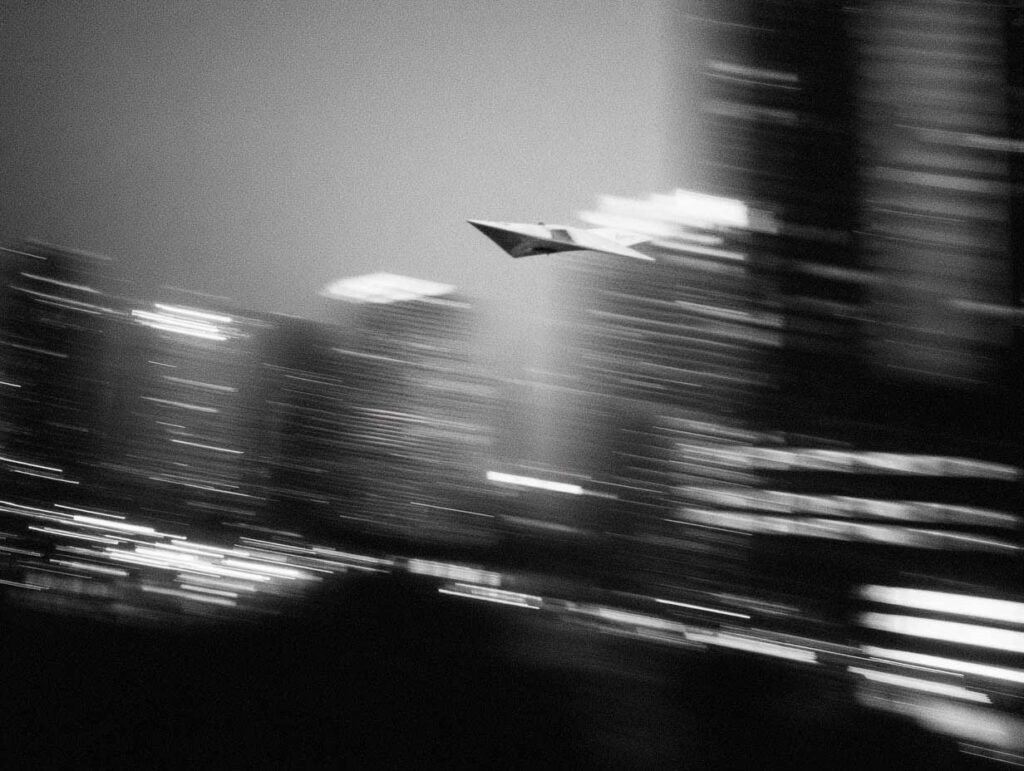
Russian drones are crossing allied airspace to test NATO’s response. Analysis of the facts, methods, objectives and impact on deterrence.
Summary
Since September 2025, NATO has confirmed a series of incursions into Poland and Romania by Russian drones, perceived as calibrated tests of allied responsiveness. Warsaw speaks of a manoeuvre designed to measure alert times, rules of engagement and inter-allied coordination. Bucharest reports short-term penetrations, sometimes followed by returns to Ukraine. The Allied Command has conducted consultations and reinforced air alerts. On the Ukrainian side, the GUR (military intelligence) describes a strategy of strategic fatigue: multiplying ‘manageable’ incidents to wear down public attention, budgetary endurance and the availability of resources. Russia’s military interest is clear: to test air defence coverage, refine flight profiles, and monitor scramble dynamics and jamming windows. The political stakes are equally clear: to exert measured pressure below the threshold of escalation, and to test Allied unity and European tolerance thresholds.
The context: air incursions that the Alliance describes as deliberate tests
In early September 2025, the Polish authorities reported the simultaneous entry of around 20 drones into the country, triggering an alert and the mobilisation of national and allied resources. Several vehicles were neutralised; while others left the airspace after flying over for a few minutes. In Romania, similar events were reported, with trajectories tangential to the border and brief intrusion times. NATO condemned these violations and reiterated Moscow’s responsibility for stability in the Black Sea region and on the north-eastern flank. This sequence of events is not isolated: since 2023, debris, drone components and limited incursions have been documented in both countries. What is new is the coordinated scale, the deeper penetrations than before and the succession of cases within a few weeks.
Technically, the vectors involved are loitering munitions and reconfigured reconnaissance drones, sometimes of the Shahed/Geran type, with low flight profiles, moderate speeds (around 150–190 km/h), reduced radar signatures and trajectories exploited as close as possible to the terrain. The interest for the Russian military command is twofold: to measure the detection bands used (L/S/X), assess the density of electromagnetic surveillance and time the implementation of Quick Reaction Alerts. For the Alliance, the challenge is to prove that ground-based detectors, airborne radars and patrols can, together, generate a reliable lead and an interception decision within a timeframe compatible with the protection of sensitive areas.
The modus operandi: how Moscow calibrates its tests below the escalation threshold
The Russian drones observed follow a ‘cognitive load’ logic: multiple trajectories, variable altitudes (often <300 m), maritime flight segments to complicate correlation, and time-stamped windows coinciding with scheduled patrol rotations. The volume of aircraft is not aimed at total saturation, but at dispersing attention. A typical incursion lasts from a few minutes to a few tens of minutes, enough to trigger procedures, but not enough to warrant a heavy response. Flight plans seem to be designed to successively test the layers of defence: low-altitude coverage radars, passive RF sensors, then kinetic reaction or jamming.
On the allied side, the response follows a codified sequence: multi-sensor detection, runway qualification, political/military decision, scramble of interceptors and, if necessary, neutralisation. Low-signature propeller-driven vectors require adapted radars and robust data fusion. Recent examples show increased coordination between command centres, but also constraints: patrol availability, responsiveness of short-range surface-to-air systems, and the risk of collateral damage if interception occurs over populated areas. It is precisely these procedural frictions that Russia seeks to observe.
Russia’s objective: to learn at minimal cost and wear down Western vigilance
Why increase the number of these limited intrusions? Firstly, to build a base of learning. Each allied scramble provides information: reaction time, vectors mobilised, interception altitude, radio silence zones, sectors with less coverage. By cross-referencing several episodes, the Russian military command can draw up a probabilistic map of the ‘holes’ in the radar network, the most favourable times and the corridors to be exploited in the event of a crisis. Secondly, to fuel a hybrid warfare strategy: to generate widespread wear and tear on logistics (fuel, flight hours, maintenance), crews (repeated on-call duty) and politicians (media pressure, internal debates on rules of engagement).
Finally, to test cohesion. NATO‘s responses are national and then allied: if differences emerge — different interception doctrines, hesitations about the use of force, budgetary priorities — Moscow will draw useful conclusions about the endurance and resilience of European capitals. The final tally can be summed up in three lines: marginal cost on the Russian side, collection of operational indicators and potential erosion of public perception of the threat.
The Ukrainian interpretation: ‘intentional fatigue’ as a line of effort
The GUR describes this campaign as a controlled strategic fatigue. Talking about ‘tests’ is not enough: the targeted repetition of micro-incidents normalises the risk. Through a series of scrambles without major consequences, public opinion may minimise violations, demand budgetary trade-offs and pit air defence spending against civilian priorities. This psyops mechanism is not theoretical: it can already be observed in the European debate on the pace of deliveries, the unit cost of surface-to-air missiles and the density of sensors to be deployed. This is what Moscow is aiming for: to accustom societies to ‘minor’ hiccups in order to reduce the political impact of a future ‘major’ incident.
Kyiv highlights another point: Europe is now learning what Ukraine has been experiencing since 2022, on a smaller scale but with the same time constraints. Flight profiles, combined drone-missile attacks, exploited weather windows, GNSS jamming efforts and decoys require a shorter OODA loop, adequate ammunition stocks and proactive maintenance. Ukraine’s publicly stated offer consists of sharing doctrine, simulators, feedback, and teams dedicated to countering Russian drones.
The allied response: adjusting doctrines, sensors, and decision-making chains
NATO has responded with political consultations, messages of deterrence, and occasional reinforcements of its air posture. On the technical front, three areas are key. First, low-altitude detection: increase the density of very short-range sensors, combine continuous wave radars, RF and optronic sensors, and pool tracks via real-time fusion. The countries concerned must close known ‘radar valleys’ and extend the bubbles around critical infrastructure (ports, bridges, bases). Secondly, graduated neutralisation: prioritise interception outside inhabited areas, develop non-kinetic weapons (directional jamming, protocol takeovers) and reserve kinetic effects for necessary cases, with appropriate ammunition. Finally, the decision-making chain: reduce the time between detection and authorisation of action, clarify the thresholds for use and improve the reliability of national/allied coordination.
In terms of training, the objective is to standardise joint drills: short-range ground-to-air defence, air patrols and electronic warfare cells. Joint Polish-Romanian teams, supported by Ukrainian instructors, can accelerate the ramp-up. In terms of budget, sustainability is as important as effectiveness. Priority should be given to low-cost sensors and effects in large numbers, with open APIs and regular updates, rather than a few high-end items with poor support.

The impact on learning: what Russia and NATO stand to gain or lose
Russia is gathering data on NATO’s response: surveillance topologies, scramble speed, interception patterns. It is refining its profiles for other theatres or for future actions in the Baltic and Black Seas. It is assessing political sensitivity: which countries react the fastest, which media outlets amplify the message, which allies remain cautious. The Alliance, for its part, capitalises on concrete lessons: shorter C2 chains are needed, economical ammunition stocks for low-value targets, more robust fusion algorithms against weak tracks, and close border cooperation to avoid ‘track loss’ between FIRs.
The main lesson is operational: the ‘slow, low, small’ threat requires multi-layered, resilient defences with high detection rates below 300 m altitude. The second is political: communication must be accurate, neither alarmist nor complacent, to avoid the boomerang effect of strategic fatigue. The third is industrial: Europe must produce sensors, jammers and suitable munitions in volume, with local supply chains capable of delivering within twelve to eighteen months.
The short-term trajectory: reducing the window of uncertainty
The coming weeks will be decisive in locking down procedures on the eastern flank. Incursions into Poland and incursions into Romania have shown that response times can still be improved and that sensor/effect density is insufficient in certain segments. The establishment of binational post-incident analysis cells, the pooling of raw sensor data (including unclassified data) and the rapid deployment of mobile counter-drone capabilities must become routine. Capital cities will also need to frame the public debate: explaining what has been intercepted, what has not been intercepted, and why, without divulging actionable details. This is the price of credible deterrence that is not limited to press releases.
For Moscow, pushing ‘a notch higher’ carries risks: neutralisation over a sensitive area, a malfunction leading to damage on the ground, or a misidentification could provoke a stronger response. The desired balance – constant pressure below the threshold – can be upset if a major incident occurs. Hence the importance for NATO to demonstrate a clear, proportionate and repeatable interception capability. This is the language that military leaders understand.
War Wings Daily is an independant magazine.